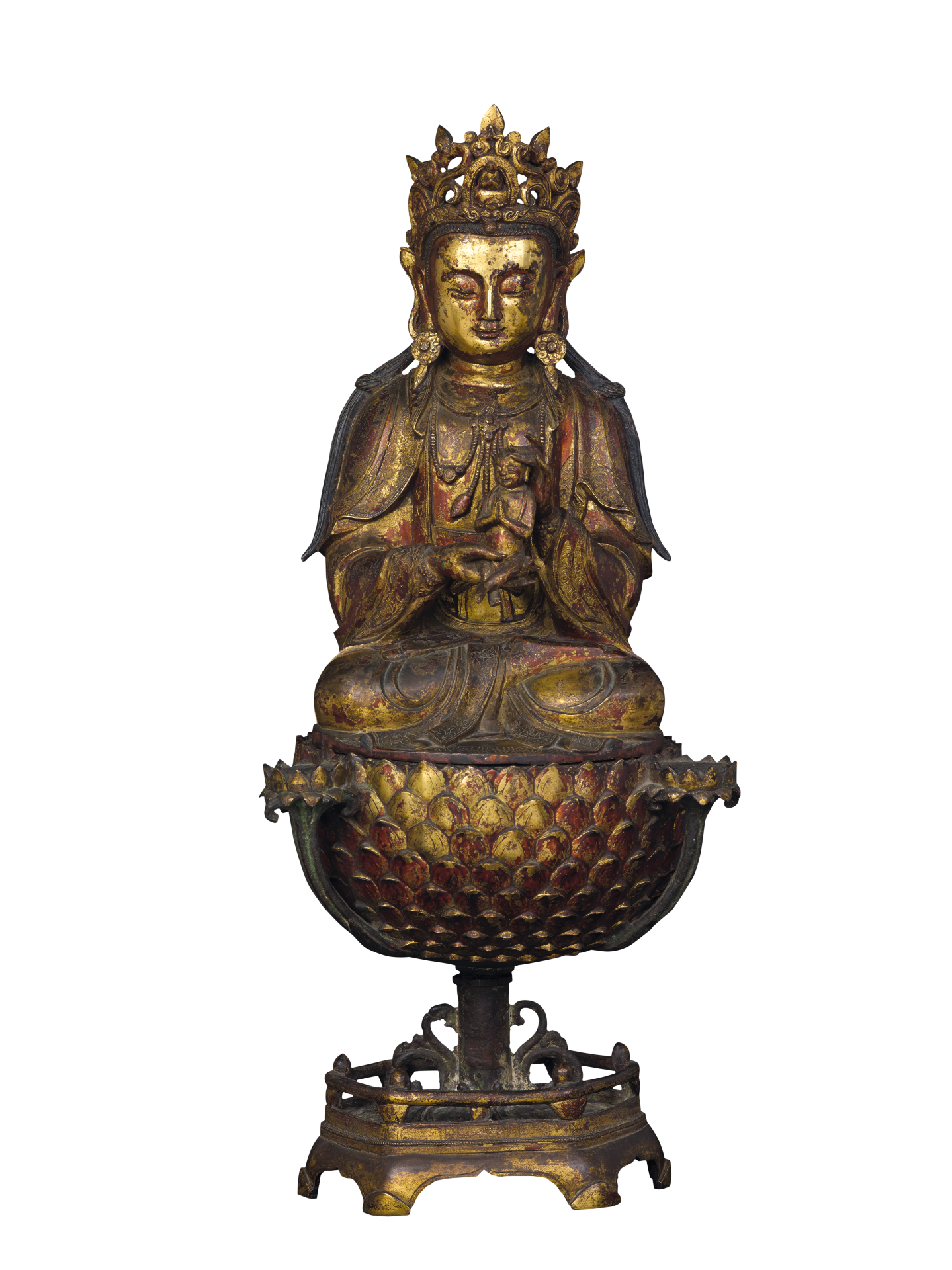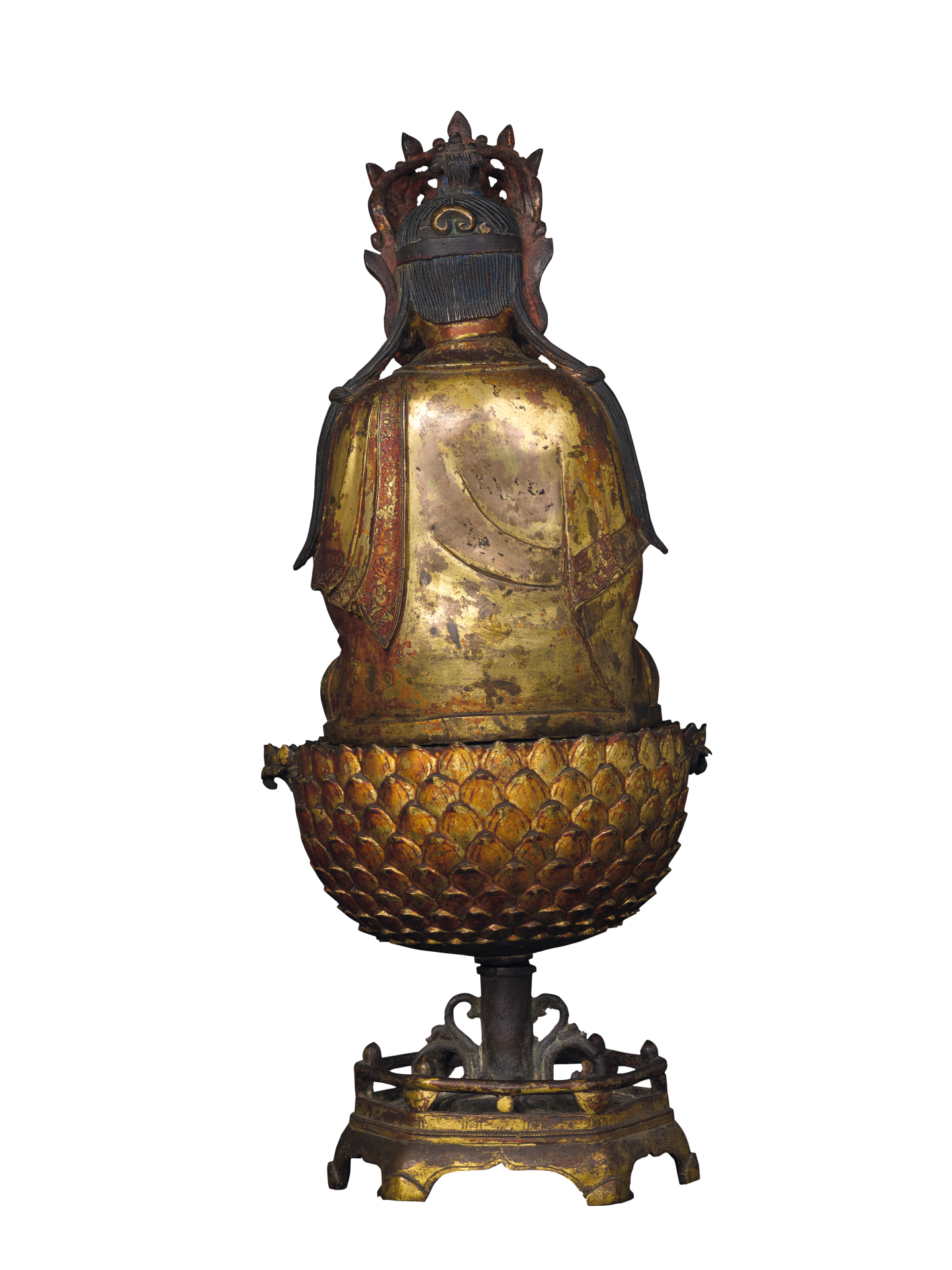Seated Child-Giving Guanyin Bodhisattva
The worship of Guanyin prevailed in the Ming dynasty (1368-1644). There were many stories of devotees praying to Guanyin for children having their wishes fulfilled. The Child-Giving Guanyin was also a popular theme of the time. The iconography shares some similarities with Madonna and Child introduced to Ming China by European missionaries. This Guanyin statue has a crown with floral design and a seated image of the Amitābha Buddha at the centre front, two braids of hair gliding down the shoulders to elbow-length, elongated ears with pendent ornaments featuring lotus motif, an oblong face, a broad forehead, close-set facial features, sharply articulated eye sockets, downcast eyes looking at sentient beings, an elegant nose, lips with lifted outer corners indicating a smile, and a relaxed and jolly countenance. A loose robe covers both shoulders over a full-length dress, strings of jewellery and bangles. The Bodhisattva is seated with legs locked in ‘lotus posture’ (padmāsana) on a lotus pedestal, and hands cuddling a baby.
This Guanyin statue’s body has a medium build, squarish shoulders, a flat solid chest, a stout torso, and smooth plump hands displaying delicate and lively gestures. The drapery is rendered in a symmetrical and formalised manner. The borders of the collar and sleeves are chiselled with floral and tendril motifs of typical Ming style. The separately cast pedestal is in the form of a large lotus rising out of a parapeted plinth, with multilayer upward-facing petals, flanked by two small lotuses borne on stalks issued from the bottom of the pedestal. The baby in the Guanyin’s bosom has a round head, a smiley face, a plump body wrapped in a dudou-apron, long limbs, joined palms and crossed ankles. He is sitting happily upon the palms of Guanyin.

